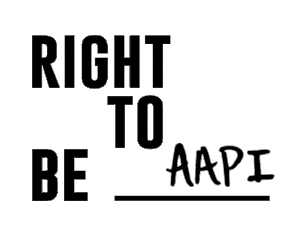
KEY TAKEAWAYS
Distract relies on de-escalating harassment by drawing attention away from it. You can do this by casually engaging the person experiencing the harassment or by creating a literal distraction like dropping something. Distract also serves as a way of showing the person causing harm that there is now another person there, which can sometimes stop the behaviour straight away. The most important piece of advice is to remember that you are to take care of the person experiencing harm. Don’t engage with the person causing the harm.
FROM THE VIDEO
Notice the maltreatment/harassment. What were the harassing behaviours you saw in this video?
Pause and evaluate the situation. Like the bystander’s first thoughts about what to do in this video, sometimes our immediate reactions might not be the most helpful. Turn that concern into support using Distract. Pause and evaluate the situation. Then indirectly create a distraction.
What did the bystander in this scenario do?
Did they address the harassment directly?
What was the impact of their intervention?
What are some of the ways you could use Distract the next time you see harassment or maltreatment happening? Making note of these now may help you recall your power to intervene when the situation occurs.
KEY TAKEAWAYS
Make sure someone is helping first. Keep a safe distance. Record date, time and place. Ask the person who experienced the maltreatment what they would like done with the documentation. Document as an intervention works well in combination with other D’s. So if someone else is already helping, consider documenting. If you don’t feel safe intervening, consider delegating first. Once you’ve done that, you can start documenting.
FROM THE VIDEO
Notice the maltreatment/harassment. What were the harassing behaviours you saw in this video?
Pause and evaluate the situation. Though we don’t see it in the video, we imagine this bystander has used Delegate to get help from someone nearby and then feels comfortable documenting the situation. Remember that the documentation is in service of the person who experienced the maltreatment. Always ask them what they’d like done with the documentation.
What did the bystander in this scenario do?
Did they address the harassment directly?
What was the impact of their intervention?
What are some of the ways you could use Document the next time you see harassment or maltreatment happening?
KEY TAKEAWAYS
Ask a person close by for help. Give specific instructions. This could mean asking the person sitting next to you or finding someone in a position of authority – like a coach, team manager, or security – and asking them for help. Online, consider reporting that harassment to the platform where it happened. Always check in with the person being harassed before calling the police. Delegate is not just about passing the buck to the next person to take on harassment. It’s about building a community of interveners. It’s about clearly and publicly establishing a norm that harassment and maltreatment aren’t acceptable, and getting help in the moment to take care of someone experiencing maltreatment.
FROM THE VIDEO
Notice the maltreatment/harassment. What were the harassing behaviors you saw in this video?Pause and evaluate the situation. Like the bystander’s first thoughts about what to do in this video, sometimes our immediate reactions might not be the most helpful. Turn that concern into support using Delegate. Pause and evaluate the situation. Then ask someone nearby for help.
What did the bystander in this scenario do?
Did they address the harassment directly?
What was the impact of their intervention?
What are some of the ways you could use Delegate the next time you see harassment or maltreatment happening?
KEY TAKEAWAYS
Check in after the incident is over. Offer to help. Share resources. Sometimes an incident of maltreatment happens so quickly, and Delay is one way you can still make a difference even after it’s over. It’s a way of validating someone’s experiences: Yes, that happened. No, it wasn’t okay. And no, you’re not alone. Delay is a great one to use in combination with other strategies.
FROM THE VIDEO
Notice the maltreatment/harassment. What were the harassing behaviours you saw in this video?
Pause and evaluate the situation. Like the bystander’s first thoughts about what to do in this video, sometimes our immediate reactions might not be the most helpful. Turn that concern into support using Delay. There’s still a way to make a difference even after the harassment is over, by checking in on the person who experienced the behaviour.
What did the bystander in this scenario do?
Did they address the harassment directly?
What was the impact of their intervention?
What are some of the ways you could use Delay the next time you see harassment or maltreatment happening?
KEY TAKEAWAYS
Safety first. Speak clearly and directly. Avoid arguing. Direct is the only one of the 5Ds that involves directly confronting the person doing the harassing – which means it’s the biggest safety risk. But Direct isn’t about heroics or swooping in to save the day. Like all other forms of bystander intervention, it’s about prioritizing the person being harassed; only this time, before turning your attention to them, you’re clearly but firmly setting a boundary with the person doing the harassing.
FROM THE VIDEO
Notice the maltreatment/harassment. What were the harassing behaviours you saw in this video?Pause and evaluate the situation. Like the bystander’s first thoughts about what to do in this video, sometimes our immediate reactions might not be the most helpful. Turn that concern into support using Direct.
What did the bystander in this scenario do?
Did they address the harassment directly?
What secondary D did the bystander use?
What was the impact of their intervention?
What are some of the ways you could use Direct the next time you see harassment or maltreatment happening?
OUR UPCOMING TRAININGS
YOU ARE POWERFUL
Experiencing harassment or want
to support those who are?
You aren't alone! Click to either share your story or
read and support others.









